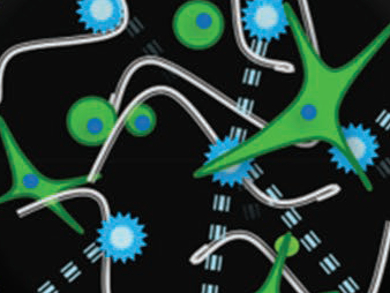Mesenchymal stem cells (MSCs) can differentiate into a variety of cell types. MSC differentiation in three dimensions is of great interest in the field of regenerative medicine, for example for bone tissue engineering. Inkjet bioprinting, where 3D structures are applied in a layer-by-layer technique, can use materials with low viscosities to print 3D structures with precise contours. It also has an increased viability rate of cells compared to other bioprinting techniques.
Horst Fischer, RWTH Aachen University Hospital, Germany, and colleagues investigated the rheological, mechanical, and biological properties of polysaccharide-based hydrogels in 3D printing with incorporated collagen type I and its impact on MSC osteogenic differentiation.
They find that the stem cells not only survive 3D-bioprinting but also maintain their mesenchymal phenotype, which is of great importance for osteogenesis. An elevated concentration of collagen decreases the stiffness of the printed products and, hence, allows extended spreading and branching of the cells. This influence on the morphology of the MSCs ultimately contributes to an enhanced osteogenic differentiation.
- Bioprinting Organotypic Hydrogels with Improved Mesenchymal Stem Cell Remodeling and Mineralization Properties for Bone Tissue Engineering,
Daniela Filipa Duarte Campos, Andreas Blaeser, Kate Buellesbach, Kshama Shree Sen, Weiwei Xun, Walter Tillmann, Horst Fischer,
Adv. Healthcare Mater. 2016.
DOI: 10.1002/adhm.201501033




